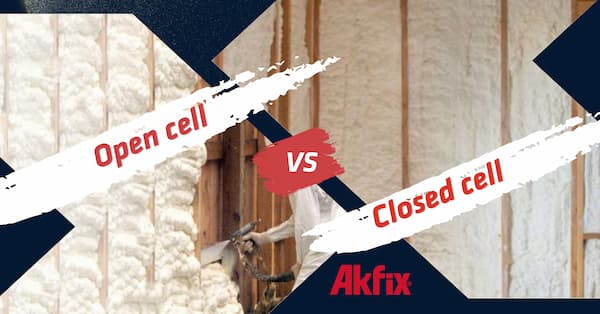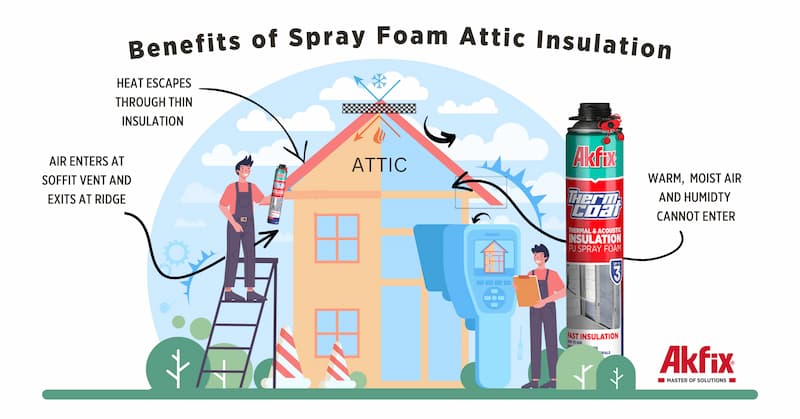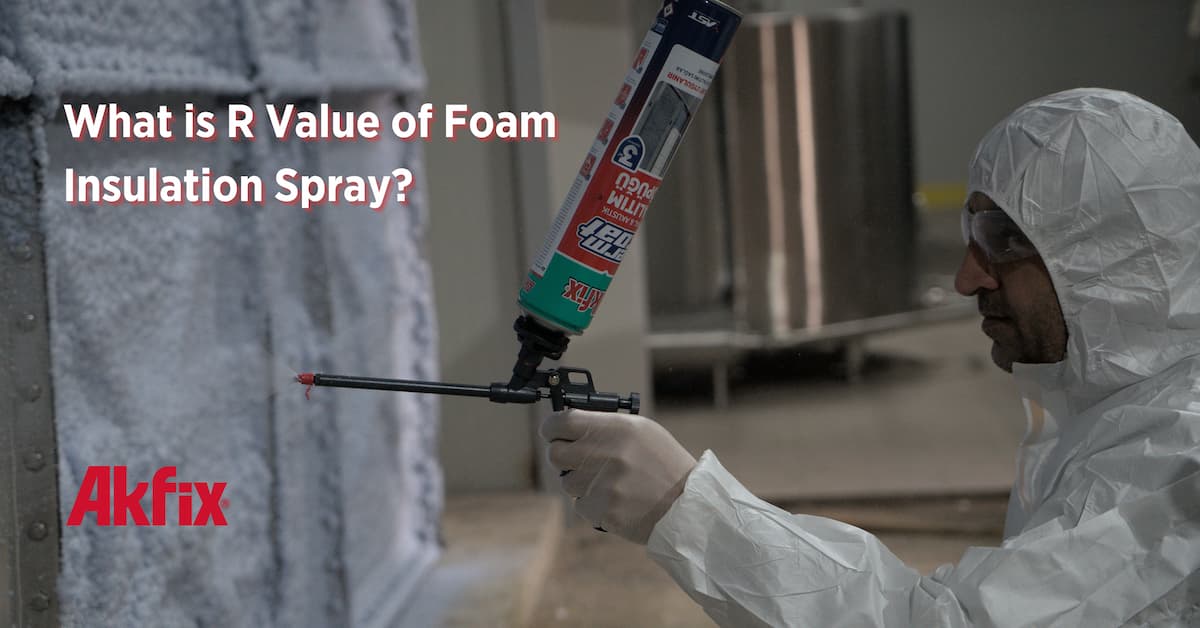You have decided to use spray foam Insulation for your home, but you do not know the right type that suits your home. This article will talk about the two types of spray foam insulation, their differences, and the advantages of one over the other to give you the perfect guide on choosing the ideal spray foam insulation type for your home.

What is The Difference Between Open Cell and Closed Cell Insulation?
Foam Insulation is a type of insulation that uses thermal insulating foam made from a low-density elastomer or polymer to reduce heat transfer between the house and the surrounding environment.
Spray foam Insulation and rigid foam insulation are the most common type of foam insulation. Foam Insulation typically has a higher R-value than other insulation types like fiberglass; hence, foam insulation is preferred over types of insulation.
Spray foam is a chemical product made by the chemical reaction between isocyanate and polyol resin. When both materials are mixed, it causes an expansion that is more than 30 times the liquid volume of both materials when sprayed.
Spray foam is used to insulate air leaks in the home, and it is divided into two types: Closed-Cell Spray foam Insulation and Open-cell Spray foam Insulation.
Both types of spray foam insulation are excellent choices for insulating your own, but they do so differently. The key differences between both types of spray foam insulation will be highlighted in the table below.
|
Closed-Cell |
Open-Cell |
|
The cells are completely closed and pressed together. |
The cells are open, which makes the foam soft and flexible. |
|
Closed-cell has a density of 5 pounds per foot. |
Open-cell has a density of 1.75 per cubic foot. |
|
The R-value of Closed-cell insulation is up to R7 per inch. |
The R-value of Open-cell is R3.5 to R3.8 per inch. |
|
Closed-cell spray foam expands up to 1 inch when sprayed |
Open-cell spray foam expands up to 3inch when sprayed. |
|
Foam Closed cell retards vapor |
Open-cell absorbs water. |
|
Closed-cell does not reduce sound waves as much as Open-cell |
They are an excellent choice for soundproof |
|
Closed-cell foam insulation cost is high. |
Open-cell foam insulation is less expensive |
What Is Closed Cell Spray Foam Used For?
Closed-cell spray foam insulation is the more common type of Polyurethane Spray foam used. It is denser and provides a better thermal barrier than the open-cell spray foam.
Closed-cell spray foam is used in many buildings, vans, and areas in the home, like attics, roofs, and windows. Closed Cell Polyurethane foam helps create a constant temperature in the building and reduces energy consumption. Closed-cell elastomeric foam is a type of closed-cell product also known as closed-cell pipe insulation, and it is known for controlling heat loss/gain in a mechanical system.

Advantages Of Closed-Cell Spray Insulation Foam?
One of the significant advantages of Closed-cell spray foam is that it has a higher R-value than Open-cell Insulation and other common insulation types. Due to certain harsh climate conditions, some buildings require a high R-value for good insulation, which is possible using closed-cell insulation foam.
Federal Emergency Management Agency (FEMA) recommends using closed-cell expanding foam insulation because it retards vapor and is flood-resistant. Closed-cell spray foam can effectively reject, which makes them useful for areas that are prone to flooding.
When applied to a structure, the cell structure of closed-cell spray foam adds to the structural rigidity of the building.
What Is Open Cell Spray Foam Used For?
Open-cell spray foam insulation is applied to areas that are difficult to reach. For example, it is difficult for other traditional insulation like fiberglass to insulate certain areas like the roof, but it is possible with Open-cell insulation.
A very common place where open-cell insulation is applied is the attics of a building. The expansion of the Open-cell makes it possible to create an airtight seal in the attics of the building.

Advantages Of Open-Cell Spray Insulation Foam?
Lesser cost of application is an advantage of the Open-cell spray foam insulation over the closed-cell. Unlike closed-cell insulation, open-cell spray foam insulation costs less to manufacture and expands more than closed-cell insulation. The expansion of Open-cell makes it better to cover the same amount of space with less material, saving labor costs as well.
Open-cell spray foam retains less than 5% water; therefore, the insulation will be in perfect condition when exposed to water and then allowed to dry.
The cell structure of Open-cell Spray insulation makes it dampen soundwaves effectively; therefore, it makes the house as quiet as possible while insulating it.
What Type Of Spray Foam Insulation Is Best?
Spray foam Insulation is important in the house for filling all types of air leaks around the house and reducing energy consumption. Since we know the uses and advantages of both types of spray foam insulation, we will evaluate the advantages of one over the other in terms of R-value and cost.
Open Cell Vs. Closed Cell Insulation R Value
As mentioned earlier, closed-cell insulation has a higher R-value than open-cell insulation, making open-cell insulation unsuitable in places with harsh climate conditions or high temperatures. Therefore, Open-cell insulation is used for places with moderate temperatures.
Closed-cell insulation is applied to places requiring a high R-value, which is suitable for areas with extreme temperatures.
Open Cell Vs. Closed Cell Insulation Cost
The Closed-cell spray foam cost is another factor when considering which spray foam insulation you want to use. In general, the cost of installing open-cell insulation is less expensive than the cost of installing Closed-cell.
Some factors that affect the insulation cost are the job's difficulty, the insulated area's size, the foam's thickness, and the type of spray foam used. For example, filling a 1000 sq foot area with Open-cell insulation will cost way less than using closed-cell insulation.
One reason the Open-cell insulation is less expensive is that it is less costly to produce its foam. Closed cell spray foam can is more expensive than an Open-cell spray foam can.
Which Insulation Should You Use?
Choosing the right insulation type depends on factors like the goal of insulation, location, and budget. For areas with extreme temperatures and requires a high R-value, the closed-cell insulation is applied to meet the code requirements.
Open-cell insulation is employed when the cost of application is a highly considered factor, and just the benefits of applying spray foam insulation are considered.
The closed-cell insulation is employed for areas prone to flooding or when the exterior of the building is to be insulated.
In a nutshell, choosing the type of insulation to apply depends on the abovementioned factors. Both spray foam insulation types will insulate your home very well and reduce energy consumption significantly.



